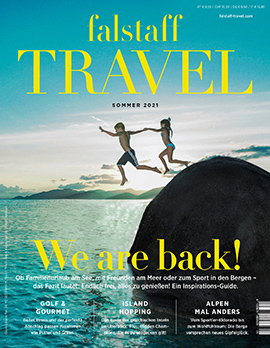
Holy Year 2025: What this Means for Your Next Rome Trip
In the Catholic Church, the year 2025 is designated as a "Holy Year." This event may also impact non-believers planning a trip to Rome.
January 15, 2025
You don’t need to be religious or Catholic to take an interest in the Holy Year. The celebrations and pilgrimage activities in and around Rome during 2025 will impact all travelers. After all, around 45 million pilgrims and visitors are expected. A bit of advance planning can go a long way for anyone planning a trip to Rome.
© Shutterstock
People on the move
It’s an event that takes place every 25 years: the Holy Year of the Catholic Church. The so-called Jubilee Year was already mentioned in the Old Testament, one of the oldest written records of the Catholic faith. In the Bible, Jubilee Years were marked by the forgiveness of debts, the liberation of slaves, and the return of land. In 1300, Pope Boniface VIII officially proclaimed the first Holy Year, calling on all believers to visit Rome and participate in rituals to receive absolution of sins. Originally planned to occur every 100 years, the interval was shortened to 25 years in 1475 to allow each generation the opportunity to take part.
Special events in Rome 2025
The Holy Year was inaugurated on December 24, 2024, with the opening of the so-called Holy Door at St. Peter's Basilica, the Basilica of St. Mary Major, the Basilica of St. Paul, and the Lateran Basilica. Believers who pass through the Holy Door, pray, confess, and receive Communion. They are granted forgiveness of all sins. At the end of the year, the doors will be sealed once again.
© Shutterstock
It may sound absurd, but it’s a fact: anyone wishing to pass through the Holy Door must first register on the free Jubilee Year app and book a timeslot. By January 7, half a million pilgrims had already passed through the Holy Door at St. Peter’s Basilica. Throughout the year, there are plans for special exhibitions, concerts, and church services. Additionally, the Pope will hold extra general audiences on select Saturday mornings. A pilgrim office at Via Conciliazione 7 has been set up to provide information about the Holy Year to all interested parties.
© Shutterstock
What you should know now before traveling to Rome
Even without the additional pilgrim crowds, Rome is already a city bustling with activity. Toward the end of last year, there were numerous public protests by locals, particularly against private short-term rentals, which many see as a major issue. Resistance to overtourism is slowly growing. With an additional 45 million visitors expected in the city needing accommodations, the already limited housing supply will become even scarcer. Those who don’t need to visit the Eternal City in 2025 would be wise to postpone their trip a bit longer.
© Shutterstock
Those who decide to visit should be prepared for a higher budget—both financially and time-wise. Early planning is absolutely essential. Flights, accommodations, and tours should be booked as far in advance as possible. Subways, buses, and taxis will be in even higher demand than usual. And while both the city and the Vatican are heavily investing in infrastructure improvements, traffic congestion is still likely. Due to heightened security measures and related checks, expect longer wait times at key locations.
Travelers and pilgrims, whether religious or not, will have the chance to experience a unique atmosphere in Rome in 2025—provided they don’t suffer from claustrophobia.





